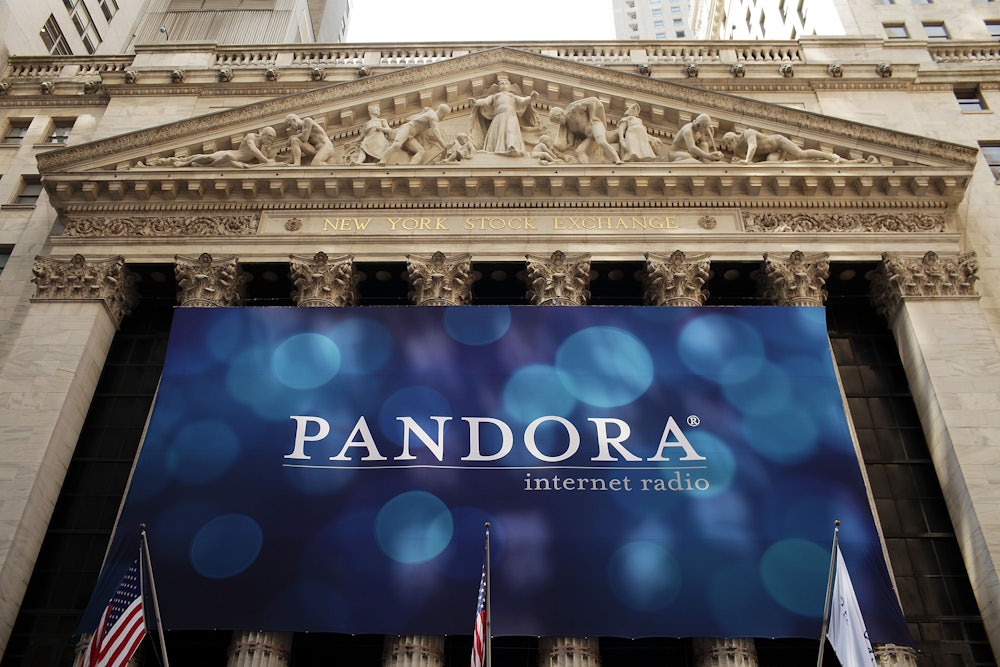When a web service shuts down, there is a predictable pattern that follows: a surge of social media outrage, a wave of lament from its core users, and, finally, a crop of post mortems analyzing what went wrong. When the beloved music service Rdio recently announced its impending closure and bankruptcy, there was the usual stream of reactions. The final act in the pattern concerns the future: Well, now what are we going to use?
That this sequence of events is familiar makes it no less sincere. As Robinson Meyer wrote in The Atlantic, Rdio as a music streaming service had endearing qualities: an emphasis on design; prioritizing albums over playlists and stations; and a clear focus on music’s social nature—you could see what was popular among your friends and be guided by their taste.
More than anything, Rdio made sense for people who grew up with CDs or iTunes. There was your music, organized alphabetically, album after album, with a little sidebar of your friends; it was comforting, part record collection, part listening party. Switching to Spotify was discombobulating for me: Gone were the neat lists of albums, instead replaced with music organized by moods or era or region—categories that felt alien to me.
Platforms rise and die with
regularity. Why should this one be any different just because it was beloved by
music nerds and the kinds of people who have strong opinions about software
design? I can’t answer that question. What’s more important, though, is how
Rdio shaped its users’ relationship to music. Its data structure—carefully
curated albums over computer-generated playlists—privileged a particular way of
thinking about art and information. It begs the question: What exactly do we
hand over when we use digital platforms to organize our relationship to the
world?
It’s hard not to compare Rdio’s demise to Google Reader’s, which was shuttered in 2013 after an eight year run. Reader was a popular product that used RSS—Really Simply Syndication—to let users read stories from their favorite sites in one place.
Like Rdio, Google Reader had a fanbase because it didn’t just give people what they wanted, but because it encouraged community. Users could leave comments and share pieces, and the communities that developed often formed around niche or highly specialized topics, such as architecture from sci-fi or historical recipes. They were also unprofitable, and became acceptable sacrifices to efficiency.
Rdio, too, could never quite hack the brutal realities of the digital streaming business, often because it made the understandable mistake of focusing on features that pleased core fans but generated little new revenue. This, too, is a slightly sickening pattern: A dedicated community evolves around a product built to appeal to a base; market realities change; and then the niche community, which piggybacked on an ostensibly mainstream product, dissipates after its host is shuttered.
Reports of Reader’s closing inspired a search for alternatives—but most people simply stopped using RSS and moved over to social media. The tide had already shifted. Instead of the rows upon rows of news stories organized in a linear fashion, people gravitated to Twitter and Facebook, letting the altogether more scattered nature of social and algorithmic filtering replace their meticulously crafted RSS feeds.
Every failed startup shows how digital platforms shape one’s view of the world, and just how quickly things change. Reader’s users shifted to the messy but lively noise of social media; if Rdio’s users go to Spotify, they’ll find a similar change—from the personally curated to the algorithmically chaotic.
What is perhaps more concerning than the specifics of how we’ll listen to Miguel in the future is how platforms are increasingly becoming the default ways we see the world. We don’t call taxis; we Uber. We don’t take pictures; we Instagram. We Vine—a concept codified by the service itself. Who would have thought to structure video data in 6-second bursts? And why has that entered our vocabulary as a recognizable unit of information?
If one metaphor deployed for places like Rdio or Google Reader is a friend’s living room, another, more useful one is the lens: A medium that shapes what we see through it. There is a particular kind of logic to a music service that organizes itself as a series of computer-generated playlists to suit the right moment in your life, just as there is a different kind of intelligence that fits news neatly into a social media stream. I am not entirely sure this can be neatly characterized as either good or bad, but it represents a change that we shouldn’t let pass without note. When we react so strongly to something so frippery as Twitter changing its stars to hearts, it’s a sign that our worries run deep: It’s a reaction to how internet platforms are quickly becoming the most important interfaces between ours and the world.
Recently, I have seen more than a few people in my social feeds gravitate toward The List App, which, as its name suggests, lets you make lists and share them with others. It is, like so many other apps, a strange mix of novelty and the genuinely useful—ephemera that could only really exist online. Or, as in Twitter’s case, not ephemera, because its essential unit—the tweet—has become a recognizable way of relating to the world.
As for justifying the existence of something so seemingly straightforward, the List App’s FAQ says lists are important because “human beings are innately inclined towards structuring information.” Which is true. And this is one of thousands of apps and platforms that do just that. What exactly do we gain by this process, and what do we give up? The FAQ doesn’t have an answer.
